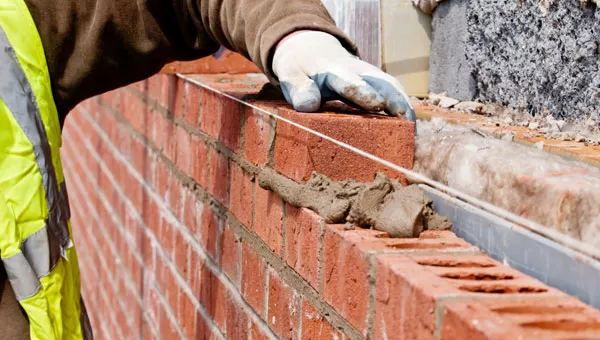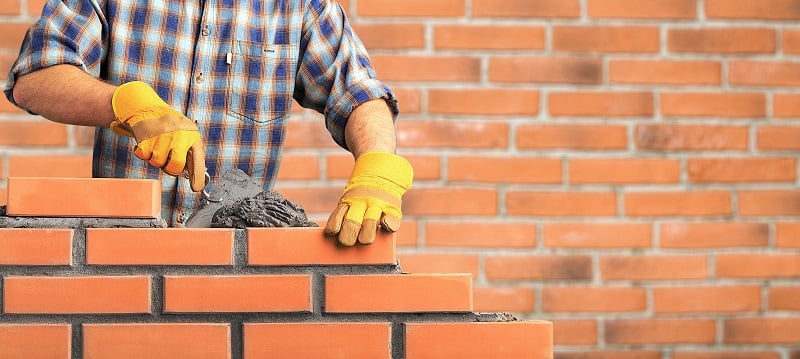Opening the Tricks of Sustainable Masonry Construction Practices for Eco-Friendly Structures
In the world of modern-day building, the quest of sustainable techniques has actually ended up being vital. Among the myriad approaches to environmentally friendly building, lasting stonework building stands apart as a time-tested and durable method that holds a wide range of untapped possibility. From the selection of products to ingenious construction techniques, the secrets to achieving sustainability within stonework building are multifaceted and intriguing. By exploring the benefits, products, methods, and future trends of lasting stonework, a much deeper understanding of just how these practices can shape the future of environment-friendly structures arises.
Benefits of Lasting Stonework Construction
Welcoming lasting stonework construction practices not only reduces environmental impact but also offers lasting financial advantages to building contractors and areas. By using materials like recycled bricks, blocks, and rocks, building contractors can dramatically lower the carbon impact of their jobs while advertising source performance. Furthermore, lasting stonework building and construction techniques, such as correct insulation and thermal mass residential or commercial properties, can enhance power effectiveness within buildings, bring about minimized operational prices gradually.
Furthermore, the sturdiness and resilience of stonework structures add to long-lasting financial advantages. Buildings built using lasting masonry techniques commonly require much less repair and maintenance, converting to set you back savings for building contractors and homeowner. The durability of masonry products likewise ensures that frameworks stay stable and safe, reducing the requirement for frequent improvements or replacements.
Eco-Friendly Masonry Products
Using environment-friendly masonry materials is a pivotal action in the direction of enhancing the sustainability of building techniques and minimizing environmental influence while optimizing long-term economic advantages. Lasting masonry materials are sourced, created, and made use of in a manner that decreases general ecological influence. Materials such as recycled bricks, recovered rock, and lasting concrete blocks are becoming progressively preferred selections for eco-conscious builders. Recycled bricks, for instance, not just divert waste from garbage dumps yet additionally require less energy to create contrasted to brand-new blocks. Redeemed rock supplies an unique aesthetic charm while reducing the requirement for brand-new quarrying. Sustainable concrete obstructs integrate recycled accumulations and might include improved insulation residential or commercial properties, adding to power effectiveness in structures.
Moreover, natural products like adobe, rammed planet, and straw bales give exceptional thermal mass residential properties, decreasing the need for home heating and cooling down energy. These products are typically locally readily available, promoting local economies and reducing transportation-related carbon exhausts. By choosing green stonework products, building tasks can dramatically decrease their ecological footprint and add to the development of much healthier, much more lasting built settings.
Energy-Efficient Masonry Methods
Power effectiveness plays an essential function in enhancing the sustainability of masonry building and construction practices. By carrying out energy-efficient masonry methods, building contractors can considerably minimize the overall energy usage of a structure, resulting in reduced functional costs and a smaller ecological impact. One chimney flashing and cap repair essential energy-efficient stonework strategy is the use of thermal mass, which entails incorporating dense products like concrete or block into the building's structure to take in and save warmth. This helps control indoor temperature levels, reducing the requirement for mechanical home heating and cooling down systems.

Developments in Sustainable Masonry
Current improvements in lasting stonework techniques have actually brought around cutting-edge strategies that are reshaping the building industry. One such innovation is the advancement of self-healing concrete, which utilizes germs installed within the concrete to heal fractures autonomously. This advancement not only decreases maintenance expenses but likewise improves the sturdiness of masonry frameworks, adding to their sustainability.
One more noteworthy technology is making use of recycled accumulations in stonework building - masonry contractor. By incorporating products such as crushed ceramic waste or recycled glass into concrete blends, building contractors can lower the ecological effect of construction jobs while maintaining structural integrity. This method not just draws away waste from garbage dumps but additionally preserves natural sources, making it an essential innovation in sustainable stonework building and construction
In addition, the combination of digital style tools, such as Structure Info Modeling (BIM), is changing the way stonework frameworks are planned and constructed. BIM enables more specific calculations, reduced material waste, and enhanced power effectiveness, eventually bring about even more lasting structure techniques. These technologies jointly indicate a promising future for sustainable masonry construction in the era of environment-friendly buildings.
Future Trends in Masonry Sustainability
With the ingenious strides made in sustainable masonry practices, the future patterns in stonework sustainability are poised to further transform the construction industry. Among the vital patterns forming the future of masonry sustainability is the enhanced integration of technology. Innovations such as Structure Details Modeling (BIM) and online reality simulations are being utilized to maximize stonework building and construction procedures, resulting in minimized material waste and improved energy efficiency in buildings.
Furthermore, the growth of novel sustainable products is set to play a considerable function in enhancing the eco-friendliness of stonework building. masonry contractor. Advancements like self-healing concrete, recycled aggregates, and bio-based binders are gaining grip for their ability to decrease environmental impact while keeping structural honesty

Conclusion
In conclusion, sustainable masonry building techniques supply numerous benefits for environmentally friendly structures. masonry contractor. Innovations in sustainable masonry are continuously being developed to further boost the ecological performance of buildings.